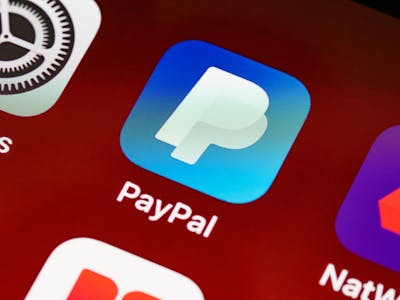
PayPal is one of the most recognized names in the world of online payment systems. For many, it represents the beginning of digital money transfer and secure online transactions. Over the years, a popular narrative has developed that Elon Musk, the tech mogul known for Tesla and SpaceX, was the founder of PayPal. While there is some truth to this belief, the full story is more complex and involves multiple people and companies. To understand Elon Musk’s role in the creation of PayPal, it’s important to trace the company’s origins from a chronological and factual standpoint.
The roots of PayPal can be traced back to two separate startups during the late 1990s: X.com, founded by Elon Musk, and Confinity, founded by Peter Thiel, Max Levchin, and Luke Nosek. Musk founded X.com in 1999 as an online financial services company. His vision was to revolutionize the banking industry by offering a full-service online bank. X.com allowed users to manage their finances, make payments, and invest—all online. At the time, this was a groundbreaking idea. Elon Musk, a physicist and entrepreneur with previous success from selling his software company Zip2, was enthusiastic about disrupting the traditional financial system. He used part of his earnings from the Zip2 sale to launch X.com and was deeply involved in its product development and business strategy.
At the same time, another team of entrepreneurs was working on a different innovation. Confinity, founded in 1998 by Peter Thiel and Max Levchin, focused on creating a way for people to send money via PalmPilots and later through email. Their product, called PayPal, was designed to facilitate peer-to-peer digital payments. Confinity’s approach was more focused and narrower than Musk’s broad vision for X.com, but it gained rapid traction among eBay users who needed a secure and convenient way to pay for goods bought through the online marketplace. While X.com was trying to be a bank of the future, Confinity was quickly gaining popularity for solving a very immediate and practical problem.
In March 2000, X.com and Confinity merged in a strategic decision to combine their technologies, user bases, and visions. The companies had similar goals in the financial tech space, but their approaches were different. Elon Musk initially took over as CEO of the newly merged entity. Musk was enthusiastic about continuing under the X.com brand and focusing on building a comprehensive financial platform. However, internal conflicts soon arose regarding the direction of the company. Musk strongly favored Microsoft’s software stack for the business, while much of the engineering team preferred Unix-based systems. Additionally, there were disagreements over branding and the future of PayPal.
The name X.com created confusion among users, with some even mistaking it for an adult website. Many employees pushed to rebrand the company as PayPal, the name already gaining popularity among consumers. The growing support for the PayPal brand, combined with Musk’s management style and technical decisions, led to mounting tension. In October 2000, while Elon Musk was on a trip to Australia, the board of directors made a bold move: they voted to replace Musk as CEO with Peter Thiel. This leadership change marked a significant turning point in the company’s development.
After Musk’s removal, the company fully embraced the PayPal brand and dropped the X.com name. Under Thiel’s leadership, the company focused more intently on peer-to-peer payments, especially on eBay, where PayPal had become the dominant payment method. The business model was streamlined, and PayPal experienced rapid growth. In 2002, just two years after the merger, PayPal went public. That same year, it was acquired by eBay for $1.5 billion in stock. The acquisition helped solidify PayPal’s position as a trusted and widely used payment platform.
Despite his ousting from the CEO role, Elon Musk remained the largest single shareholder of PayPal at the time of its sale. He walked away from the deal with approximately $165 million from his shares. While he did not singlehandedly found the company known today as PayPal, his early vision and involvement were crucial to the creation of the merged entity. Musk took his earnings and quickly moved on to other high-profile ventures, investing in Tesla Motors and founding SpaceX, ventures that would later eclipse his involvement with PayPal in the public’s eye.
The narrative that Elon Musk “founded PayPal” persists largely due to his early and prominent role in the creation of X.com, which merged with Confinity to become PayPal. However, this claim simplifies and overlooks the contributions of others like Peter Thiel, Max Levchin, and Luke Nosek, who were responsible for the original PayPal product under Confinity. The merger of X.com and Confinity brought together two different innovations, and the final product that became PayPal was shaped by both teams. The name, user base, and successful payment product all originated with Confinity, while Musk brought the ambitious vision, funding, and business energy that helped scale the company.
In conclusion, Elon Musk did not found PayPal in the way that the myth suggests. He founded X.com, an online financial services company, which later merged with Confinity—the actual creator of PayPal. Musk was a key figure in the early days, both as a founder of one of the two merging companies and as an early CEO of the combined entity. However, the product known today as PayPal was the result of collaborative innovation and strategic decision-making by a larger team. Understanding this history offers a more accurate view of how PayPal was truly founded and highlights the importance of collective effort in building successful tech companies.